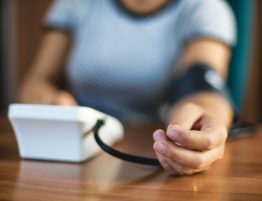
Drinking a glass or two of wine with meals – but not at other times – may help lower the risk of developing Type 2 diabetes, preliminary research suggests.
The findings add to a body of research suggesting alcohol consumption, which can harm health even when done in moderation, also may have some health benefits. The research, considered preliminary until a full study is published in a peer-reviewed journal, was presented Thursday at the American Heart Association’s Epidemiology and Prevention, Lifestyle and Cardiometabolic Health conference in Chicago.
“The effects of alcohol consumption on health have been described as a double-edged sword because of its apparent abilities to cut deeply in either direction – harmful or helpful, depending on how it is consumed,” study author Dr. Hao Ma said in a news release. Ma is a biostatistical analyst at Tulane University Obesity Research Center in New Orleans. “Previous studies have focused on how much people drink and have had mixed results. Very few studies have focused on other drinking details, such as the timing of alcohol intake.”
While some clinical trials have suggested moderate drinking may help glucose metabolism, Ma said, “it remains unclear whether glucose metabolism benefits translate into a reduction of Type 2 diabetes. In our study, we sought to determine if the association between alcohol intake and risk of Type 2 diabetes might differ by the timing of alcohol intake with respect to meals.”
In this new study, researchers analyzed health data for 312,388 healthy drinkers from the United Kingdom who were 56 years old on average. After about a decade of follow-up, those who said they drank alcohol with meals were 14% less likely to develop Type 2 diabetes than those who reported drinking alcohol outside of mealtime.
The benefits of alcohol consumption during meals were strongest for people who drank wine. A lower rate of Type 2 diabetes occurred only for people who drank in moderation – up to one 14-gram glass of wine – about 5 ounces – for women, and up to two glasses – about 10 ounces of wine – for men.
The relationship between drinking alcohol and developing Type 2 diabetes nonetheless remains controversial, Dr. Robert H. Eckel, emeritus professor of medicine at the University of Colorado-Denver, said in a news release.
“These data suggest that it’s not the alcohol with meals but other ingredients in wine, perhaps antioxidants, that may be the factor in potentially reducing new-onset Type 2 diabetes,” said Eckel, a past president of the AHA who was not involved in the study. “While the type of wine, red versus white, needs to be defined and validation of these findings and mechanisms of benefit are needed, the results suggest that if you are consuming alcohol with meals, wine may be a better choice.”
Because the study included mostly white adults of European descent, it’s unknown whether the findings would be the same in other populations.
Women who are pregnant or are trying to get pregnant, people under the age of 21 and those with certain health conditions should not drink alcohol. And people who do not already drink alcohol should not start, according to the Centers for Disease Control and Prevention. Those who do drink regularly should consult with a health care provider about the benefits and risks of moderate alcohol consumption.
Previous research has linked alcohol consumption to short- and long-term health risks, which increase along with the amount of alcohol consumed. These include motor vehicle crashes, sexual risk behaviors, high blood pressure, obesity, stroke, breast cancer, liver disease, depression, suicide, alcohol abuse and alcoholism. Consuming as little as one drink daily has been shown to increase the risk for some cancers and other health conditions.
If you have questions or comments about this story, please email editor@heart.org.




